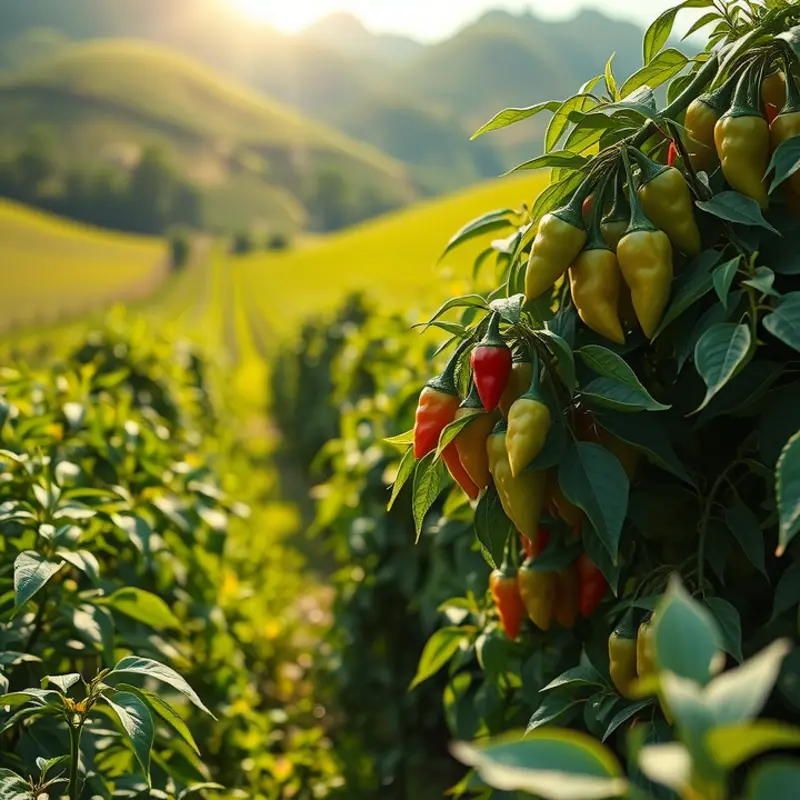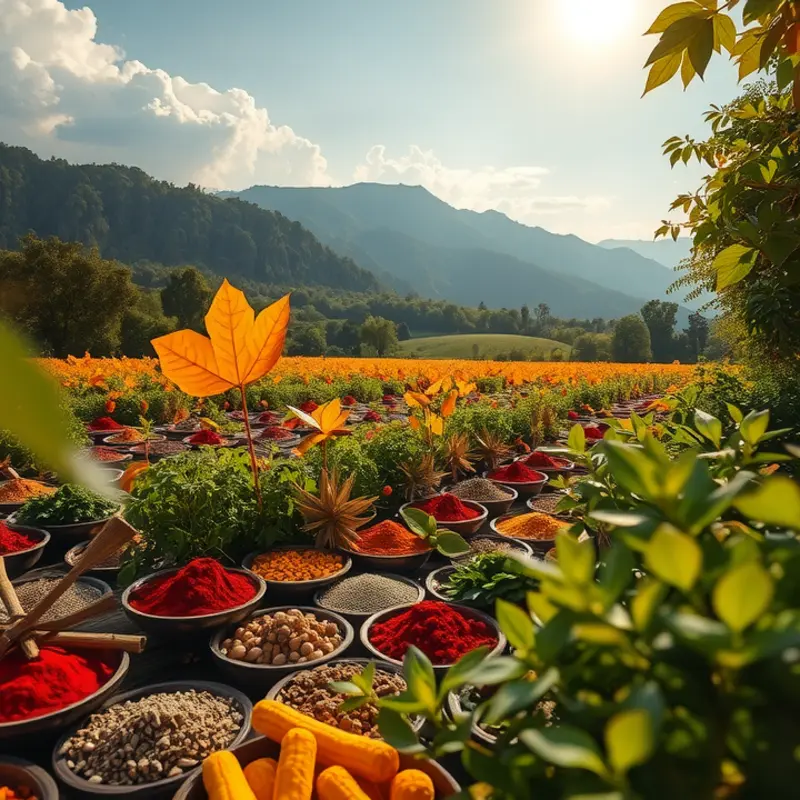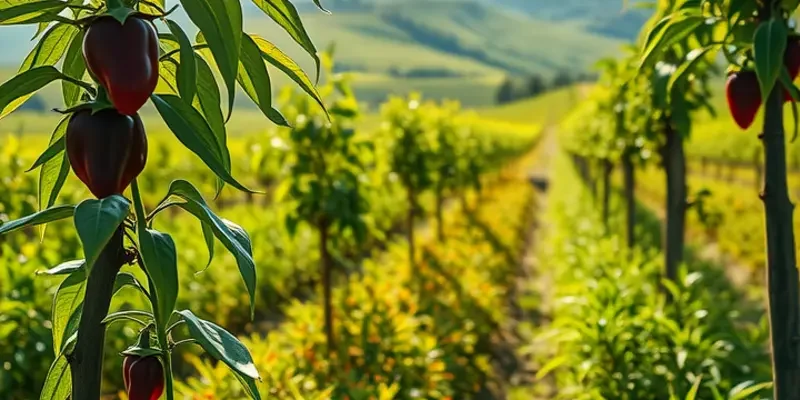Spices are the unsung heroes behind the dishes that tantalize our taste buds and evoke cherished memories. Their rich history weaves a tapestry of culture, economy, and exploration. From ancient trade routes to the modern kitchens around the world, spices have played a vital role in shaping international cuisines and culinary traditions. This journey through time unveils not only the diverse flavors of spices but also their profound cultural significance and the stories that lie beneath their tiny seeds and colorful seedlings.
The Ancient Spice Routes: Trade and Transformation

The ebb and flow of ancient spice routes marked the dawn of global trade, bridging vast distances with the allure of exotic flavors. These routes, stretching from the aromatic markets of India and the lush groves of Southeast Asia, wove through deserts, sailed across seas, and traversed mountain passes to reach the bustling ports of the Mediterranean and beyond. Central to these exchanges were spices like pepper, cinnamon, and saffron, coveted not merely as luxuries but as catalysts of transformation in social and culinary landscapes.
Pepper, often referred to as “black gold,” was a cornerstone of the spice trade. Native to southwestern India, it was in high demand for its pungent aroma and ability to preserve food. Roman and Greek societies utilized pepper in their cuisines, laying the foundation for a trading network that spurred voyages to the East. Pepper’s role in enhancing the flavor profile of European dishes cannot be overstated, influencing culinary practices that sought to balance taste with imagination.
Cinnamon, derived from the bark of trees in Sri Lanka and India, was another spice of high esteem. The Egyptians used it in embalming, reflecting its value beyond the kitchen. Cinnamon’s sweet warmth found its way into medieval European recipes and spurred trade among Arab merchants who controlled its flow for centuries. These merchants often kept its origin a closely guarded secret, weaving tales of exotic lands and dangerous harvests to maintain its high market value.
Spices like saffron, derived from the crocus flower, were prized for their vibrant color and medicinal properties. Indigenous to Greece and Southwest Asia, saffron’s labor-intensive cultivation made it one of the world’s most expensive spices. It featured prominently in Persian, Indian, and Andalusian cuisine, underscoring the interconnectedness of these regions long before the Silk Road officially linked them.
The spice routes were pivotal in cultural exchanges that shaped civilizations. Indian curries, infused with a medley of spices, traveled westward, influencing medieval European food and medical practices. In the opposite direction, Mediterranean herbs and olive oils made their way to Asian shores, fostering fusion cuisines long before such a concept was fashionable.
These historical trade networks also played a role in the emergence of new economic and political empires. European nations, driven by the promise of spices, embarked on explorations that led to the Age of Discovery and the establishment of colonial outposts. The resulting conflicts over spice monopolies transformed geopolitical landscapes, with powers like Portugal and the Netherlands vying for control over their production and distribution.
Today, the echoes of these ancient spice routes persist. The spices that once traversed perilous trails continue to enrich and enliven global cuisines, speaking to a shared heritage of exploration and cultural synthesis. Exploring the enduring impact of these spices on culinary practices highlights our interconnected past and present, echoing themes of culinary fusion in trade and beyond. For more on how trade influences culinary practices, you can explore culinary influences through trade.
Spices as Cultural Narratives: Traditions and Ceremonies

Spices possess a magical quality, transforming simple ingredients into vibrant stories of culture and tradition. Across the globe, these aromatic treasures play a central role in rituals and celebrations, transcending mere culinary function to become symbols of belief and identity.
In India, the art of spice blending is a melodrama of flavors, with each concoction narrating a unique story. The Indian curry, which might seem just a dish to many, is in fact a complex narrative of regional diversity. Each state boasts its own version of curry, colored by specific spices that are often passed down through generations. These spices are not simply for taste; they signify health, prosperity, and cultural allegiance during festivals and family gatherings. The traditional use of turmeric, for example, extends beyond its culinary relevance; it is considered auspicious and used extensively in spiritual rituals and ceremonies.
Morocco offers another vivid tapestry woven with spices. The Moroccan tagine, a slow-cooked stew, is a perfect example of how spices narrate cultural tales. A blend of cumin, ginger, and saffron infuses the dish with the warmth of Moroccan hospitality. The ritual of preparing a tagine is one of meticulous care, often involving the whole family during festive times. Spices in Moroccan culture emphasize harmony and balance, integral to their community celebrations. This is mirrored in the ceremonial tea preparation, where mint and sugar blend in a symphony of tradition.
In Mexico, spices fuel the vibrant dance of flavors known as mole. Mole is more than just a sauce; it’s a culinary expression of history and tradition. This dish blends ingredients introduced by both indigenous peoples and colonial influences. Each mole version tells of regional histories and familial pride, painstakingly prepared over days during important celebrations such as the Day of the Dead. Chilies, chocolate, and an array of spices create rich, complex layers that speak to Mexico’s diverse cultural roots.
The ceremonial use of spices is equally significant beyond the plate. Incense in religious rituals across Asia plays a crucial role in creating a sacred atmosphere. Frankincense and myrrh, both precious spices, are used in various ceremonies to purify and sanctify. These scents carry prayers and aspirations to the divine, embodying spiritual connections that have transcended generations.
Through spices, cultures communicate their histories and values. They are a universal language that speaks to shared experiences and beliefs. From the bustling spice markets of Marrakech to the quiet temple incense rituals in Kyoto, the cultural narratives told by spices are global threads that bind diverse societies together.
For a deeper exploration of global culinary influences and how spices have historically played a role in cultural exchanges, you might find this article on culinary influences through trade particularly insightful.
Final words
The history of spices is a vibrant tapestry that unites cultures, traditions, and cuisines across the globe. As we cook with these aromatic ingredients, we are not just enhancing flavors but also honoring the rich stories woven through generations. Whether it’s the warmth of cinnamon in a holiday pie, the fiery kick of chili in a traditional dish, or the fragrant essence of saffron in a celebratory feast, spices remind us of our shared humanity and the diverse culinary landscapes that we traverse. Let the profound influence of spices inspire your culinary adventures, inviting you to explore their histories and savor their legacy.








